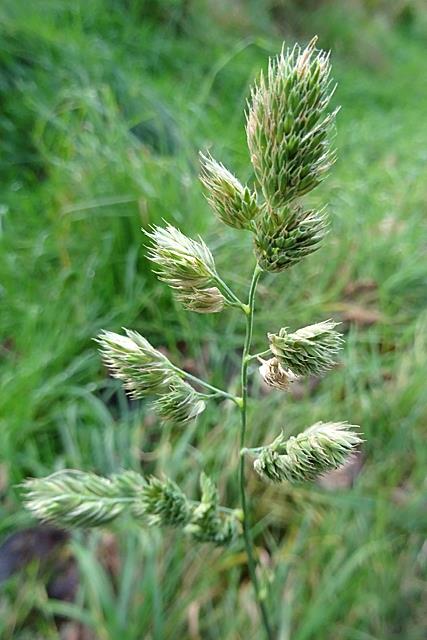A Ranger writes
Countryside Ranger Richard English shares his knowledge of various grasses.
Our countryside is full of grass – the assorted species found out there make up an important part of grasslands, if you’ll forgive me stating the obvious. However, they’re also integral to woodlands, hedgerows, riverbanks and pretty much any other habitat you care to mention. Despite its ubiquitous nature, these humble plants are often overlooked in the countryside. Their value to wildlife can’t be overstressed - grasses provide food and shelter for a range of invertebrates, including beetles, grasshoppers and butterflies such as speckled wood and small skipper.
 Cock's foot grass photo credit: Anne Burgess
Cock's foot grass photo credit: Anne Burgess
One of our commonest and easily spotted species is cock’s-foot. It’s a tall, robust grass which can grow to well over a metre in height. Its name is derived from the arrangement of the flowering heads, which grow in groups of three or more tight clusters. These are said to resemble a bird’s foot, although the resemblance isn’t that obvious to be honest. Cock’s-foot, perhaps unsurprisingly, forms the main food plant of the cocksfoot moth larvae. These are tiny caterpillars which feed on the grass seeds and then pupate within the stems. The adult moths are also small and easily overlooked, although they can be found feeding in great numbers on flowers such as buttercups.
There are more delicate and aesthetically pleasing grasses out there. Quaking grass can be found throughout the county, particularly in coastal grasslands and in the Lammermuirs. The flower heads are found on the end of long, drooping stems and even a light breeze will cause them to quake. This gives rise to not only the grasses official name, but also several local variations such as totter or toddling grass. A close view of the heads will reveal them to be attractively striped in green and reddish-purple – this, combined with their dangling form gives them the appearance of tiny hops (sort of).
 Quaking grass
Quaking grass
If you’re still not convinced about grasses, then consider marram grass. This is a stout coastal species which plays a massive role in stabilising sand dune systems and preventing erosion. Marram, along with sea lyme grass, can be found in habitats all along the East Lothian coastline. Or how about the fact that grasses are fine examples of evolutionary adaptation? Most plants have their meristems (i.e. the bits that do most of the growing) located towards their tips of the stems. Grasses, however, have meristems located at nodes near the base of the plant. This makes them able to continue growing despite being grazed (or mown) and, in part, explains their widespread success. Finally, let’s not forget that wheat, barley, rice and corn are all basically cultivated forms of wild grasses. So, arguably grasses provided the springboard for the whole of modern human civilisation – their use was certainly a massive leap forward in early agriculture. Without them we wouldn’t have corn on the cob, pizza, risotto or the humble chip roll; and that’s not a world I want to live in.
 Marram grass photo credit: Walter Baxter
Marram grass photo credit: Walter Baxter